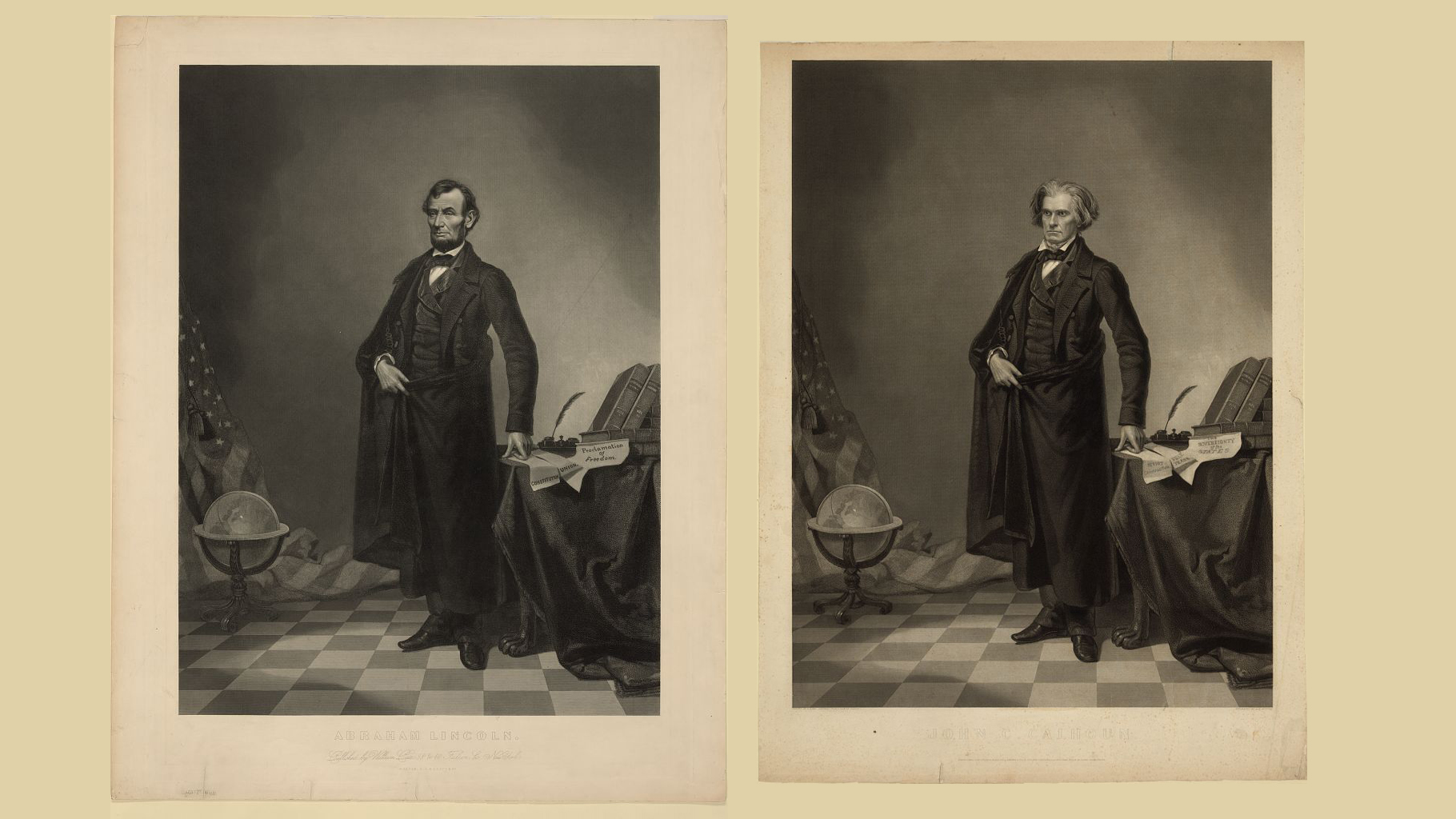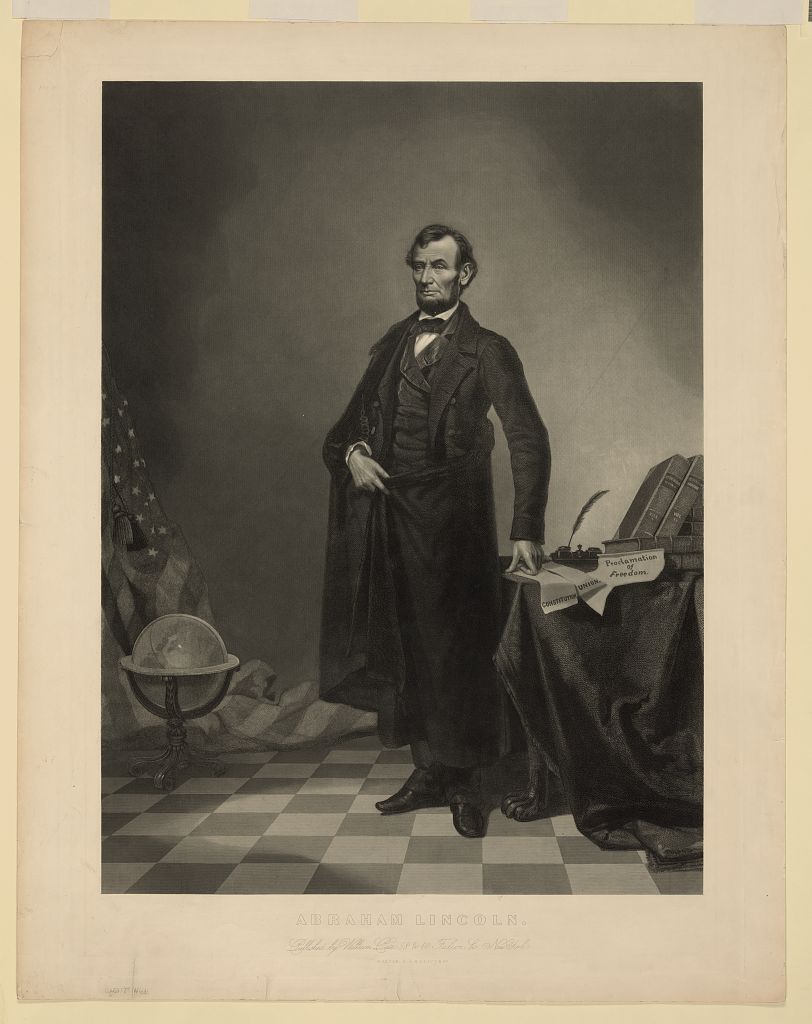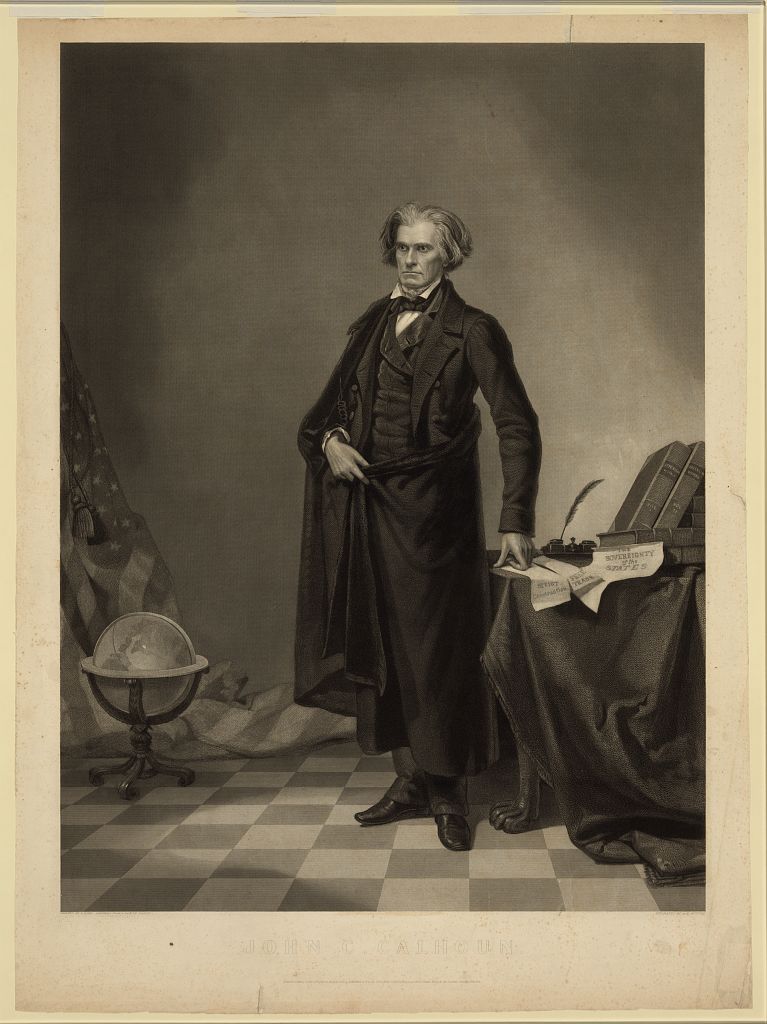Abraham Lincoln vs John Calhoun: the original deepfake photo of a US president
This iconic 1865 portrait of Abraham Lincoln was actually a doctored image of slavery advocate John Calhoun

Today, we're terrified that photographs have been manipulated by AI. Before that it was deepfakes, and Photoshop, and predating that we worried that images had been airbrushed.
But images have been doctored for literally hundreds of years – including one of the most iconic portraits of Abraham Lincoln, which was created by superimposing a photograph of Honest Abe taken in 1864 onto a painting of slavery advocate John Calhoun created in 1852.
The situation is eye-opening for a number of reasons. Firstly, the photograph of Lincoln used to doctor the painting of Calhoun is arguably the most famous of the President: the 1864 photo, taken by Anthony Berger, adorned the five-dollar bill from 1914-2007.
And of course, the greatest sting in the tail is that Lincoln – quite literally the face of emancipation – sits atop the body of a slaveowner and nullifier.
"The John C Calhoun portrait morphed into a Lincoln portrait, flowing robes and all, Unionist replacing secessionist," Harold Holzer, author of The Lincoln Image, told BBC Culture.
"The great historical irony is that it's the preserver of the Union's head on the great nullifier's body – the emancipator's face on the body of slavery's most ardent defender."
Perhaps the greatest irony is the response of the President, following an accusation of being two-faced: "If I had another face, do you think I'd wear this one?"
The best camera deals, reviews, product advice, and unmissable photography news, direct to your inbox!
So how did this bizarre situation come to be?
According to Holzer, following Lincoln's assassination in 1865, "there was an explosion of demand for pictures: heroic portraits, deathbed scenes, even retrospective pictures that suggested he was an active military leader".
He told the BBC that the doctored image was probably created "when demand for images of the martyred Lincoln peaked".
While the President was famous for embracing photography as a means to cultivate his image, reportedly sitting for over 120 photos in his last 18 years, it is claimed that there was a lack of appropriately "heroic" images of him.
Anthony Berger, who took the original 'Five Dollar Bill Portrait', worked for photojournalist Mathew Brady – a famed photographer who established a studio in Washington, DC.
However, although he was renowned for his Civil War images, Brady was previously a painter – and was said by Dr Hany Farid to have "routinely doctored photographs to create more compelling images".
According to BBC Culture, it was a printmaker named William Pate who carried out the work of compositing Lincoln's head onto Thomas Hicks' painting of Calhoun – along with editing the papers reading "Strict Constitution", "Free Trade" and "the Sovereignty of the States" to read "Constitution", "Union" and "Proclamation of Freedom" in the doctored version.
So there you have it: 159 years before Meta started haphazardly accusing photos of being "Made with AI", and 80 years before the first digital computer was even invented, people were doctoring and deepfaking images of celebrities.
If you prefer your portraiture to be real, rather than faked by whatever method, you might be interested in the best cameras for portraits, along with the best lenses for portraits.

James has 25 years experience as a journalist, serving as the head of Digital Camera World for 7 of them. He started working in the photography industry in 2014, product testing and shooting ad campaigns for Olympus, as well as clients like Aston Martin Racing, Elinchrom and L'Oréal. An Olympus / OM System, Canon and Hasselblad shooter, he has a wealth of knowledge on cameras of all makes – and he loves instant cameras, too.
![[Abraham Lincoln, three-quarter length portrait, seated, facing right; hair parted on Lincoln's right side]](https://cdn.mos.cms.futurecdn.net/LhkfUbmTA8RJyYgGjtvxWg.jpg)


